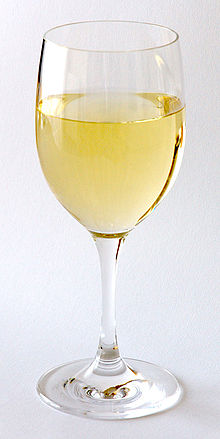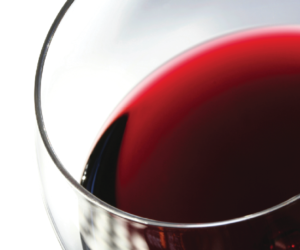 We’ve all heard the “edict” from winemakers extolling the benefits of controlled-temperature fermentation: improved phenolic extraction in reds and fresher, fruitier whites. “Ferment reds quickly at “hot” temperature; ferment whites slowly at cool temperatures,” is what most of us were told.
We’ve all heard the “edict” from winemakers extolling the benefits of controlled-temperature fermentation: improved phenolic extraction in reds and fresher, fruitier whites. “Ferment reds quickly at “hot” temperature; ferment whites slowly at cool temperatures,” is what most of us were told.
But what does this all really mean? What are the effects of fermentation temperature? Do they vary between reds and whites; from one grape variety to another? What about wine styles?
Although the relationship between fermentation temperature and phenolic extraction in reds is better understood, it is a hot topic of debate when it comes to white winemaking, particularly when cool verges on cold fermentation, wherever that demarcation may be.
Here we examine the science behind the effects of temperature on white wine fermentations and how to implement and manage cool fermentations in a home winery. This can be extended to young, fruity red wines where similar techniques are often used.
Just remember that there are no hard and fast rules in such a controversial topic. Follow the general guidelines and recommendations, and experiment to see what works best for you.
How cool?
From a chemical composition perspective, white wines and very young, fruity reds produced by carbonic maceration are generally more delicate owing to the lack of protective tannins and other antioxidants and to the higher volatility of aromatic compounds. The latter is exacerbated as temperature increases, and so winemakers counteract volatility by conducting a cooler fermentation (and cellaring), typically in the 60–70 °F (15–20 °C) range, often much lower; by contrast, reds are usually fermented in the 75–80 °F (24–27 °C) range. A benefit of cooler fermentations is that less sulfite is needed at the crusher. Cultured yeasts (Saccharomyces cerevisiae) specifically recommended for cool fermentations will dominate over indigenous yeasts, which are more temperature sensitive, and therefore less sulfite is needed to inhibit those.
Aromas and esters
During (alcoholic) fermentation, S. cerevisiae yeasts not only convert sugar into alcohol but also produce a multitude of by-products including aromatic compounds, of which esters are an important subset. (Note that aromatic compounds is used here to refer to those compounds that express aromas, not the classical definition, which implies a molecular structure belonging to a general class of compounds). Esters are responsible for the vast array of fruity and tropical aromas in wine; there are almost 200 esters identified in wine. These should not be confused with other classes of compounds, such as terpenes and pyrazines that are responsible for varietal character.
A small subset of esters occur naturally in grapes and carry through to wine, but the vast majority are the result of an enzymatic (biological) reaction in S. cerevisiae yeast cells resulting from fatty acids and higher alcohols in separate pathways from the main fermentation pathway. (A pathway is a very specific biological process defining the series of reactions from substrate, e.g. sugar, to by-product, e.g. alcohol, carbon dioxide and esters). Esters are also formed from malolactic fermentation and during wine aging from the nonenzymatic (i.e. chemical) interaction of alcohols and acids, but these have much lower organoleptic impact than those formed from yeast fermentation.
Esters from fatty acids are known as ethyl esters; for example, ethyl hexanoate contributes strawberry and green apple aromas. Esters from higher alcohols are known as acetate esters; for example, isobutyl acetate contributes the familiar strawberry/raspberry aromas found in fruity reds, and isoamyl acetate imparts banana and pear aromas.
But not all esters are desirable; some can potentially lead to flawed wines. For example, ethyl acetate is a very familiar ester responsible for the strong nail polish remover in wine affected by acetic acid bacteria and characterized by high volatile acidity; it is also known as ethyl ethanoate, i.e. an ester of ethanol and ethanoic acid (acetic acid).
You may have also heard about lactones, such as wine lactone, responsible for coconut aromas, or oak lactone, responsible for oak aromas from barrel aging. These are a specific subset of esters but their chemistry is complex; we’ll just treat them simply as esters.
Although esters are synthesized in tiny quantities, they have very low detection (olfactory) thresholds, in the μμg/L range (1 μg/L is equal to one part per billion), hence why we often refer to them as volatile esters. And so great care must be exercised during winemaking to maximize production and minimize loss particularly that esters tend to be (nonenzymatically) reactive and result into other by-products, such as acetic acid if wine is stored at warm temperatures. Esters are also synthesized and retained to a greater degree at cool temperatures (according to Ronald Jackson in his 2008 book Wine Science: Principles and Applications), or by carbonic maceration. Carbonic maceration is a vinification technique that triggers an intracellular fermentation within whole (uncrushed) berries to extract the maximum amount of fruit from grapes for making light-bodied red or white wines with oodles of fruit and very little tannins but which must be drunk soon after production. For more information, please refer to “Carbonic Maceration: Making Nouveau-Style Wines at Home” in the August–September 2002 issue of WineMaker.
Winemaking challenges
The challenge here is to balance these objectives with the needs of S. cerevisiae yeasts and avoiding a stuck or sluggish fermentation that could also result in off-aromas and flavors. In a home winery, there is the added challenge of achieving and maintaining cool temperatures. So you’ll need to plan carefully and well in advance of the winemaking season.
First, decide on a grape variety and the style of wine you want to make, and then choose an appropriate yeast strain. The main strain selection criteria here are temperature tolerance and ester production. You should also opt for a strain with a relatively slow rate of fermentation to improve ester synthesis and retention; a bayanus strain is therefore not ideal in spite of being able to ferment at very low temperatures. Look for a strain that is specifically recommended for fruity wines — the specs might state something like “high ester production.”
If you are able to source S. uvarum yeast, you might be interested to know that it is specifically recommended for cool fermentations to enhance ester synthesis. Additionally, it can also be used for microbiological acidification to fermentatively augment total acidity by increasing malic acid content in acid-deficient grapes, for example, from a very hot vintage.
How long will fermentation take? The answer to that depends on many factors such as yeast strain, fermentation temperature, availability of nutrients, and sugar/alcohol concentrations. It can take a couple of weeks at warmer temperatures or several weeks or even months at cooler and cold temperatures. Of course this will need to be evaluated against the potential risk of microbial spoilage where little or no sulfite is used, or the synthesis of volatile sulfur compounds, such as hydrogen sulfide (H2S).
Cool techniques
In commercial winemaking, jacketed tanks with recirculating chilled glycol are used for cool fermentations, but those types of tanks are expensive to buy and operate, and are geared towards larger productions.
In home winemaking, the ideal solution is to ferment in a cool or cold area where there are little or no temperature variations, for example, in an existing cellar. If the temperature is too cold, a heating belt can be wrapped around the carboy, or you can use a space heater although those tend to be energy hungry. If the temperature is too warm, you can place the carboy in a cold-water bath. You can use a large plastic vat filled with cold water and add ice if you need to lower the temperature further. Be sure to check on the temperature and replenish the ice to maintain a constant temperature; you don’t want the temperature to fluctuate too much — yeasts don’t like that.
You can place a large floating thermometer in the juice to keep an eye on temperature; leave it in for the duration of fermentation. Also, keep in mind that the higher the surface-to-volume level of the container, the higher the heat loss will be, so smaller containers will be easier to keep cool than larger containers.
In all cases it is best to start fermentation at a relatively warm temperature, for example, at the high end of the recommended range. Once fermentation activity is visible, you can transfer the carboy to the cold area. Never go from a warm fermentation to a very cold area — this might result in a stuck fermentation. It’s always best to lower temperature progressively where possible. And avoid introducing too much oxygen, such as by stirring, as it may diminish ester retention. Preferentially, if possible, swirl the carboy around the bottom circumference to stir less back into suspension.
How to tell when fermentation has completed
When there is no more bubbling activity in the fermentation lock, use a siphon, wine thief or gravy baster to retrieve a small volume of wine sample, transfer to a cylinder with a hydrometer, and measure the Specific Gravity (SG). The wine has finished fermenting and is considered dry when the SG reads 0.995 or lower. Bring the wine back to cellar temperature and proceed as usual with other winemaking procedures, i.e. stabilization (addition of sulfite), fining, etc.
Age wine at cool (cellar) temperature, around 55 °F (13 °C), for a minimum of 6 months; again avoid introducing oxygen until you are ready for bottling. You’ll be rewarded with a fresh, fruity wine.






